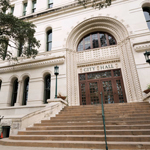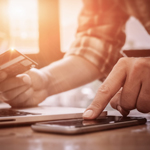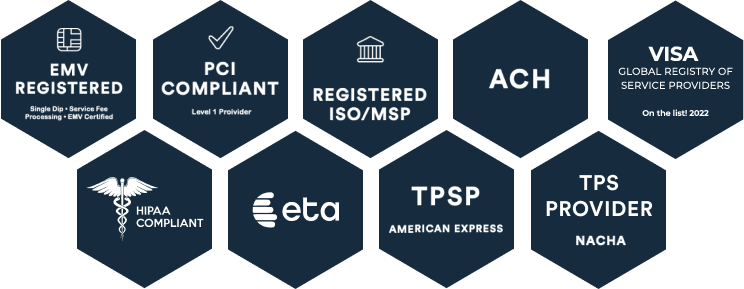The Experience Era is upon us. Citizens expect to interact with their local government in the same ways they interact with retailers, their local grocery stores, buying tickets for their favorite comedian, and even the way they pay their babysitters. But for many local governments, modernization is hard to accomplish, especially when it comes to the payment experience.
How can you modernize the citizen payment experience? The first is finding out how your current payment process is outdated. Here are three areas that most government agencies struggle to modernize (and tips on how to fix each area):
1 – Limited payment options
For citizens, the experience era means finding a similar payment experience everywhere you go. Consumers are used to an incredible number of options at nearly every checkout—tap-and-go, text payments, Venmo, PayPal, credit cards, eCheck, and so many more. In fact, digital payment usage has increased so rapidly, in 2022 nearly 90% of consumers were engaging with the payment option. Consumers who use more than one digital payment option have also increased—from just over 50% in 2021 to 62% in 2022.
The bottomline: digital wallets are preferred by consumers. When local governments can’t or won’t offer them as a form of payment, the payment experience is frustrating.
→ But with the right solution, you can give citizens the freedom to choose the way they pay.
When local governments modernize their payment experience, they offer more payment options. And this impacts more than citizen satisfaction. When citizens have the freedom to choose the way they pay their bills, on-time payments increase. In fact, 75% of consumers say they would pay their bills as soon as possible if they could use a digital payment option.
So what does offering more payment options look like? It looks like mimicking the way consumers pay for other things in their life: digital wallets, online payment options, tap-to-pay, eCheck, Venmo, PayPal, and more. Consumers are tired of paying by check and in person. At least 67% of consumers worry about losing a payment in the mail and more than 50% say they would use PayPal or Venmo if it was available at checkout.
The bottomline: when consumers are offered more modern options to make payments, they pay on time. And for the back office, that means reducing late payments, non-payments, and the need for follow up reminders.
2 – Inefficiency in revenue collection and other back office tasks
For the back office, it’s difficult to find an integrated solution that works with the growing list of use cases that a local government needs to fulfill. Local government agencies need a system that can manage a long list of different payment experiences: utility payments, ticket sales for recurring events and some events that only happen once a year, business licenses, park reservations, and more.
Add in all of the other frustrations that a typical accounting or back office team deals with—manual errors, time-to-payment, reporting issues, etc.—and it’s easy to see why most agencies stick with what they have instead of trying to find a new solution.
The bottomline: it’s difficult to find a solution that is robust enough for government agencies.
→ But with the right solution, you can improve efficiency in revenue collection (and find a solution that works for the variety of needs for a government agency).
By increasing your payment options for utilities, park reservations, ticket fees, and other government or county specific bills, citizens pay on time and revenue collection improves. In fact, 78% of consumers say that digital payments can help make government agencies more efficient. Without the added task of reconciling cash and checks, back office employees can process payments digitally and electronically. And with the right system, reconciliation is real-time and automatic, reducing the manual load (and the possibility of manual errors) for office staff members.
With digital payment options, research suggests that payments would increase by 4x, helping state income tax and fees, licenses, DMV registrations, and so many other government bills get paid on time. With these on-time payments, revenue collection becomes a series of electronic reminders to make payments—no more additional tasks of sending delinquent accounts to collections or calling citizens to make payments.
Plus, with the option to make payments digitally, in-person foot traffic to make payments (and time spent on the phone) reduces. This helps office staff focus on their primary job duties with fewer interruptions to process payments.
The bottomline: when citizens are offered payment options they want to use, revenue collection becomes easy for back office employees.
3 – Outdated payment software
For the front office, it can be difficult to keep up with the ever-evolving expectations of consumers/citizens. Budgets are set, contracts are signed, and technology moves at a pace that is far faster than the typical government team.
For citizens, outdated payment software often means a higher security risk. More than 80% of consumers say they worry about how card details are processed and managed during a payment transaction. In a 2022 survey, 70% of consumers reported feeling more comfortable using a payment method that doesn’t require sharing financial details with a vendor or merchant. And only 4 out of 10 consumers say they feel confident in the security of using their debit card.
The bottomline: when government agencies offer limited payment options that are clearly processed with outdated software, citizen concern increases and the payment experience suffers.
→ But with the right solution, you can offer anytime, anywhere payment options that are safe and secure.
The right software can help you stay connected and updated with new software and payment options as they become available. For many consumers, that means seeing options that they see from other areas of their life—Venmo, PayPal, automatic payments, and more.
PayPal is the number one digital wallet name in the U.S. that customers use to pay from anywhere, across nearly every device. Trusted by nearly two-thirds of all U.S. citizens that purchase something online, PayPal offers a safe, secure option for payments. Plus, for citizens who are unbanked or underbanked, digital payment options—like PayPal and Venmo—offer a great way for these citizens to pay their bills online.
The bottomline: modern payment platforms that are tried and true are built with security and the citizen experience in mind—better for both the citizen and local government agencies.
Improving your citizens’ payment experience is what continually drives us to innovate. Let us help your agency modernize the payment experience and give your citizens the freedom to choose the way they pay their bills.






